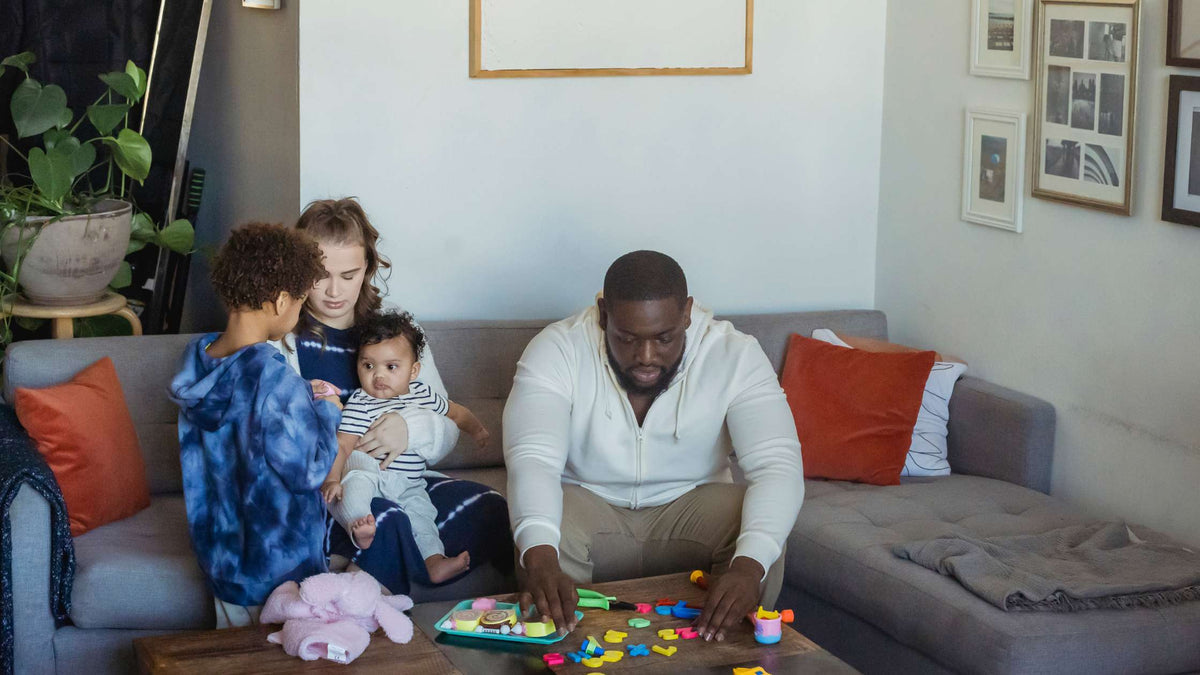
Choosing the Best Toys for Every Stage of Play: Piaget’s Research-Based Guide
Time to read 4 min
Time to read 4 min
Choosing toys for your child doesn't have to be overwhelming. This research-based guide helps parents simplify their approach using Jean Piaget’s stages of play, toy rotation strategies, and a minimalist mindset. Learn how fewer, intentional toys can lead to deeper play, better focus, and easier cleanup—while also supporting your child’s unique temperament and developmental stage.
Table of contents
If you’ve ever wandered the toy aisle at Target or found yourself lost in online “Best Toys for [Insert Age]” lists, you’re not alone. The options feel endless—and overwhelming. The truth? More isn’t better when it comes to toys.
Research shows that children play more deeply, more creatively, and more independently when they have fewer toys available. So let’s reframe how we think about choosing toys—for developmental impact, not distraction.
A minimalist approach to toys doesn’t mean no fun—it means intentional fun. Here’s what it looks like in practice:
Choosing toys with purpose and flexibility
Prioritizing open-ended materials (think blocks, scarves, or dolls)
Reducing overstimulation by limiting what’s out at any one time
Creating space for movement, imagination, and connection
Simplifying your child’s toy environment offers benefits for everyone:
Deeper Play: Kids focus longer and play more creatively
Less Overwhelm: Calmer brains, fewer meltdowns
Easier Cleanup: Fewer toys = less mess
More Focus: Less clutter encourages better attention
Want to simplify without sacrificing play? Try these ideas:
Rotate toys: Keep 6–10 accessible; store the rest for surprise later
Choose versatile items: Wooden blocks, animals, scarves, stackers
Observe your child: What do they return to again and again?
Skip the hype: You don’t need the newest gadget—follow their interests
Toy selection isn’t one-size-fits-all. Your child’s temperament plays a big role in what helps them thrive.
High-energy kids love gross motor or movement-based toys
Sensitive or cautious kids do better with familiar, cozy setups
Curious, persistent kids may gravitate toward puzzles and challenges
When toys match a child’s natural style, play becomes more meaningful—and developmentally rich. Do you know your child's temperament? We can help. We made a free quiz and guide that we know you'll love. Click here to open it up and save it until you're done reading this.
Jean Piaget, a Swiss psychologist, changed how we understand children’s learning through play. His Four Stages of Cognitive Development are still a gold standard today—and they’re incredibly helpful when choosing toys for your child’s age and stage.
Each of Piaget’s stages highlights the types of toys that will captivate your child’s interest, engage their brain, and encourage development. Here’s a breakdown of each stage:
How kids learn: Through senses and movement
Side note: This stage is the perfect time to help children grow confident with independent play. Building that skill now supports key toddler and preschool abilities—like smoother sleep routines and easier transitions between home and school. Not sure where to get started? Grab our Independent Play Guide, it's free!
Great toy picks:
Rattles and textured sensory balls
Soft crinkle books
Mirrors and pull-up bars
Stacking cups and rings
👉 See our expert-backed Baby’s First Year
How kids learn: Through pretend play and imitation
Great toy picks:
Dress-up clothes and pretend sets
Art supplies and modeling clay
Dolls, stuffed animals, and vehicles
Building blocks and magnetic tiles
👉 Explore our Raising Happy Eaters course for play-based mealtime tips ›
How kids learn: Through problem-solving and logic
Great toy picks:
LEGO sets and models
Board games (chess, strategy, logic)
Science kits and STEM projects
Crafting and DIY kits
👉 Want mindful screen-time strategies for this age? Check out our Mindful Tech course ›
How kids learn: Through abstract thought and deep interests
Great toy picks:
Advanced STEM kits or robotics
Instruments and serious art supplies
Hobby kits (woodworking, jewelry, sewing)
Strategy games and escape-room style puzzles
👉 Support grandparent connections at this age with our Confident, Connected Grandparent course ›
Even though Piaget’s stages are helpful, real life is messier. Some toys span multiple stages. And every child has a unique temperament, environment, and set of interests.
Use these stages as a guide—not a rulebook. Then trust your observations. When in doubt, simplify.
Nurtured Nest offers self-paced, expert-led courses for parents just like you. Whether you’re prepping for your first baby or supporting a curious 7-year-old, our content is grounded in research and real-life experience.